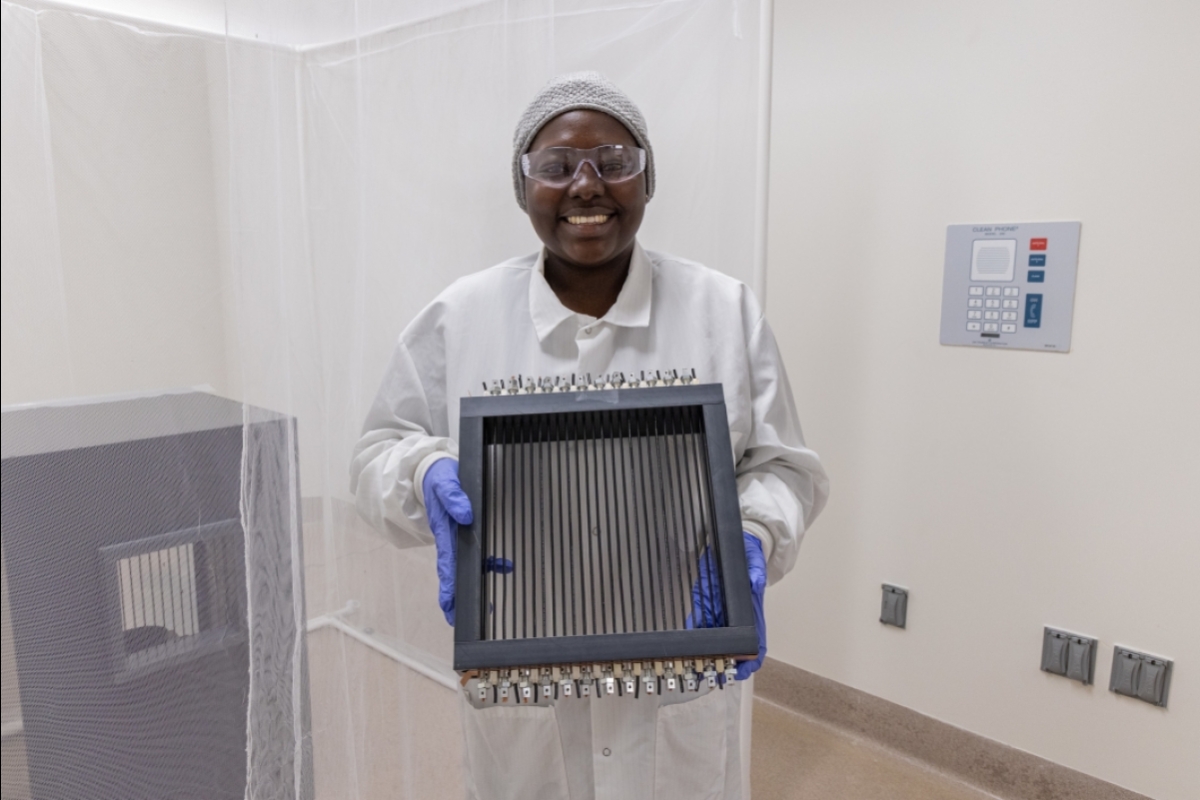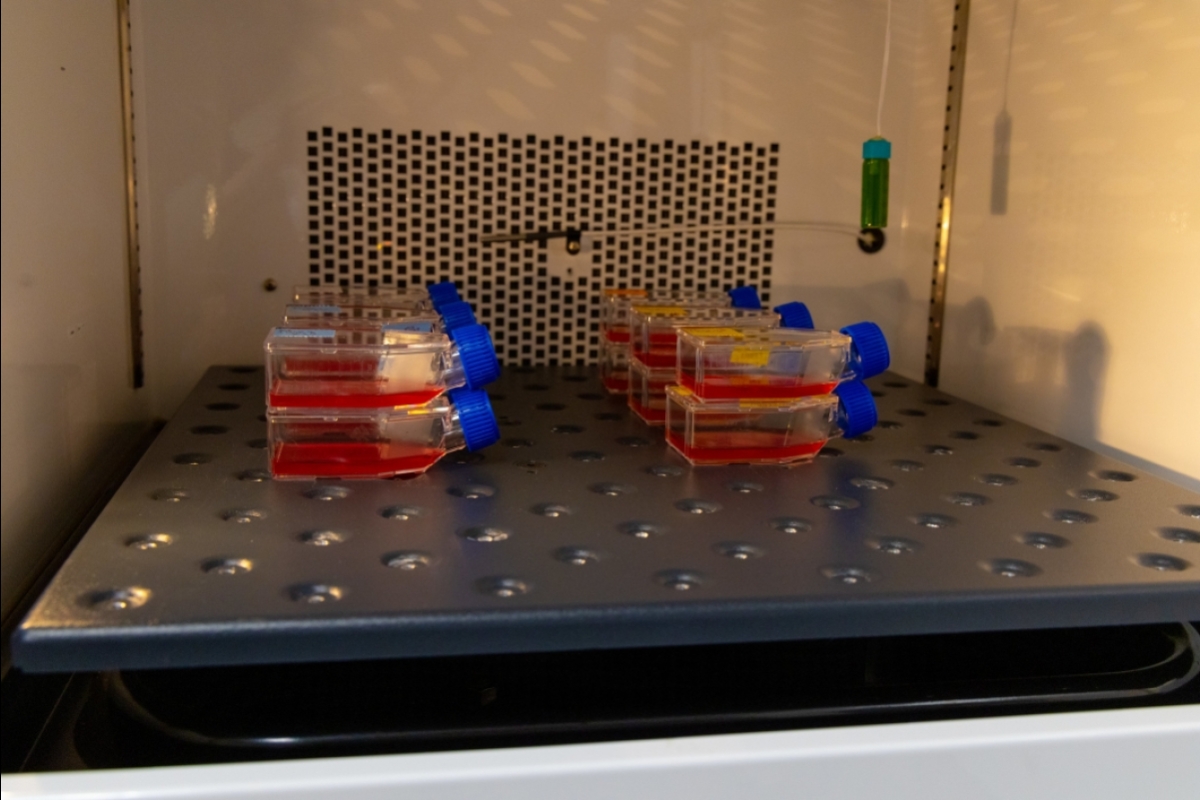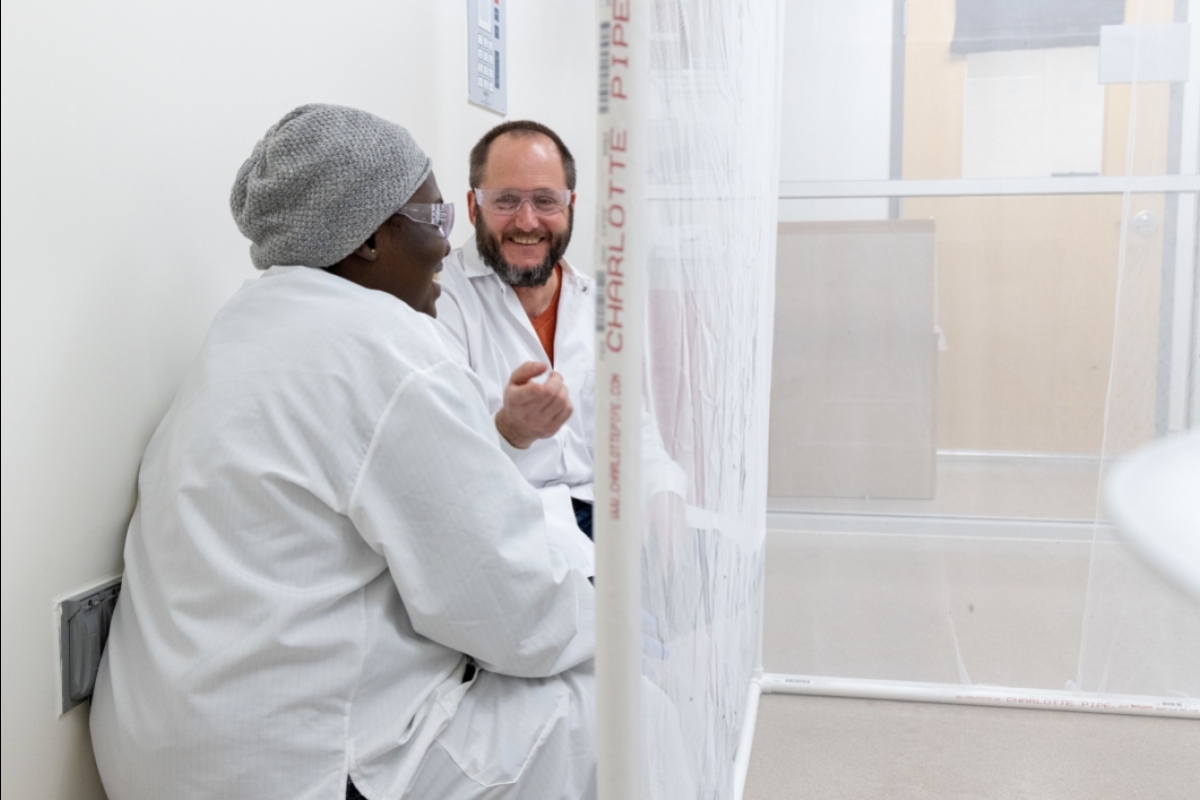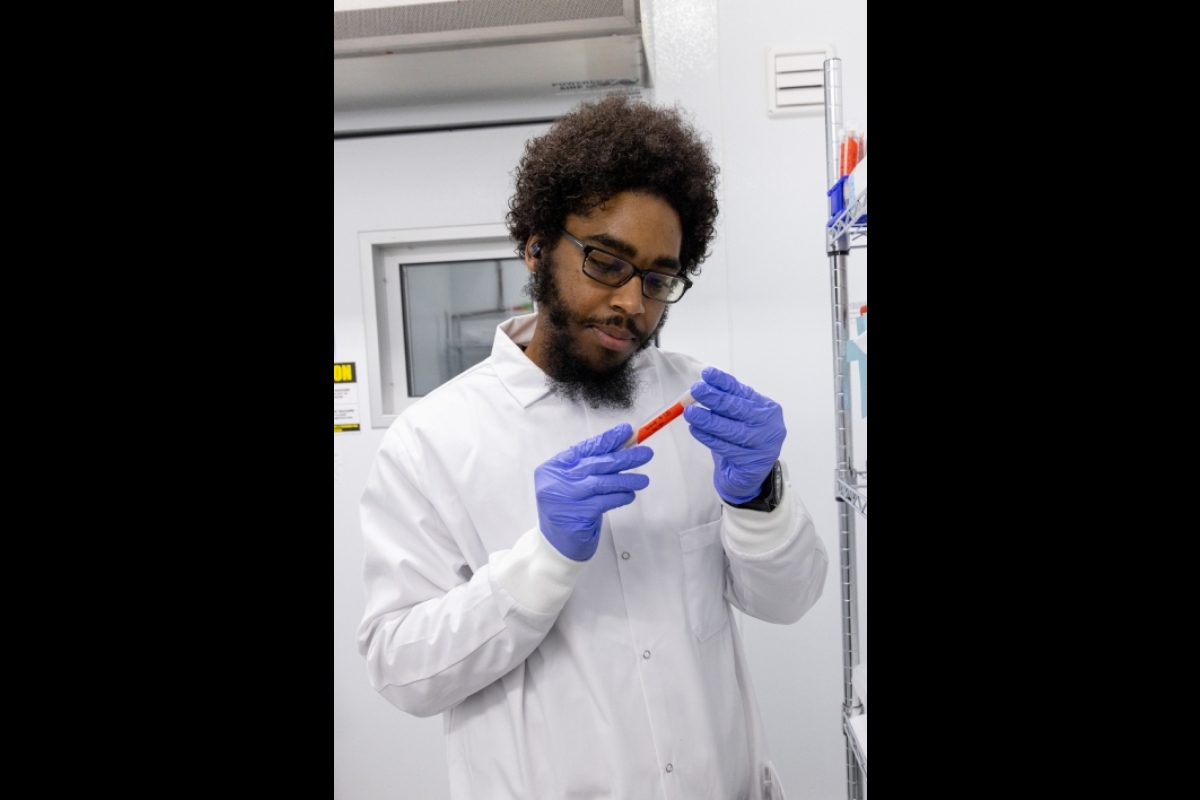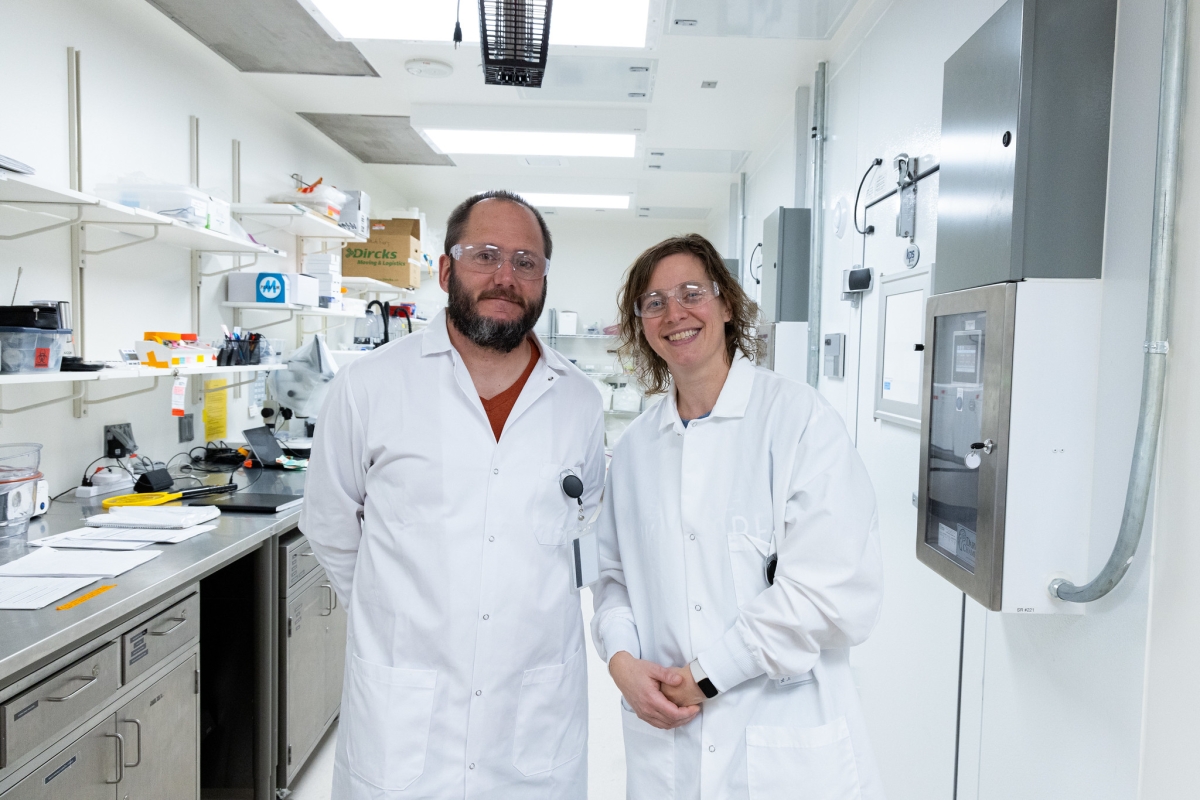Inside the insectary: ASU faculty innovate mosquito control and disease prevention
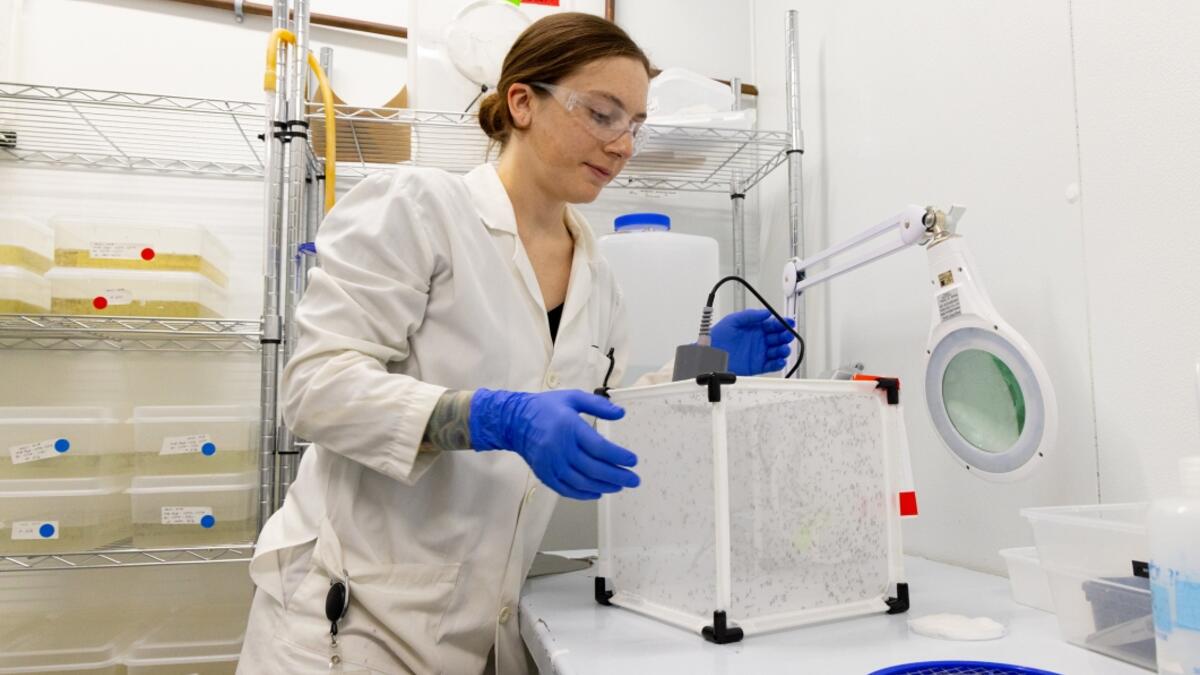
Sarah Rydberg, a research specialist and insectary manager, feeds mosquitoes a blood meal. Photo by Meghan Finnerty
Mosquitoes are often looked at as just pests — but they can also be disease-carrying killers, and Arizona State University has an insectary full of them.
“They’re the most dangerous animal on the planet,” said Silvie Huijben, an assistant professor in the School of Life Sciences.
“And on top of that, they're a nuisance. Everyone knows mosquitoes and is annoyed by mosquitoes,” added Krijn Paaijmans, an assistant professor in the School of Life Sciences.
Female mosquitoes, to be specific, are responsible for more human deaths than any other creature, totaling about 700,000 deaths annually. That’s because they transmit parasites and viruses like malaria, West Nile, Dengue and Zika.
On Aug. 20, 1897, a British medical doctor Sir Ronald Ross discovered the role of mosquitoes in transmitting malaria to humans. That discovery led him to be awarded a Nobel Prize in 1902, and Aug. 20 became World Mosquito Day in his honor.
Experts Huijben and Paaijmans have spent their careers researching mosquitoes, pathogens and disease control all over the globe. In 2018, they moved to work at ASU with the promise of designing and opening up a new facility dedicated to studying and growing mosquitoes.
In October 2022, the new $2.5 million dollar lab space opened, enabling students — from undergraduates to PhD candidates — to work alongside Paaijmans and Huijben to investigate topics like how mosquitoes survive in the Valley, how we can best manage insecticide resistance and how certain diseases behave inside of mosquitos.
The insectary has multiple interlocking doors, air curtains, strict operational procedures, and a particular air flow and regulation system to ensure that nothing dangerous escapes. The facility was designed to be an arthropod containment level 3 (ACL 3) facility and a biosafety level 3 laboratory (BSL 3), which means it can safely handle and store infectious agents or toxins.
Get an inside look
With these two distinctions combined, ASU now has a rare, state-of-the-art facility that allows Huijben and Paaijmans to study emerging viruses and their mosquito vector, should unknown diseases surface in Arizona.
“One of the great things about having that facility is that we would be able to pivot very quickly and do that kind of work where normally you'd be limited,” Huijben said.
“This facility and the research being done by Huijben, Paaijmans and the faculty at the School of Life Sciences to mitigate the global impact of vector-borne diseases is vital to our world and representative of the university’s mission to help advance research and discovery of great public value,” said Kenro Kusumi, dean of natural sciences at The College of Liberal Arts and Sciences.
“A facility of this caliber required careful and impressive work that now opens the door for students and faculty to engage in unparalleled research.”
The lab’s 3 main efforts
Current efforts at the lab focus on insecticide resistance, climate impacts and innovations for the future of mosquito research.
In recent months, Huijben and Paaijmans were awarded multiple new grants to fund their research, including two from the Pacific Southwest Center of Excellence in Vector-Borne Diseases (PacVec) as well as one from the ASU Foundation’s Women and Philanthropy.
The first grant from PacVec, awarded to Huijben and PhD candidate Donald Ward, will allow them to work in partnership with the Maricopa County Vector Control Division to look at the efficacy of insecticidal fogging in the area.
The second PacVec grant, awarded to Paaijmans, will be used for public education and research on the correlation of weekly mosquito abundance and activity to certain locations and times.
The third grant, from Women and Philanthropy, will be used to focus on culex mosquitoes, such as common house mosquitos, which are vectors for West Nile virus. The research project will examine how drought conditions impact these mosquitos and ultimately disease control.
“We hope that our research will benefit the health and the well-being of our local communities. That's our main aim,” Paaijmans said.
Resistance to insecticide
According to Huijben, resistance is inevitable.
“My research is on understanding the evolution of insecticide resistance in mosquitoes and the evolution of drug resistance in malaria parasites.”
She explains that any organism, given chemicals, will eventually evolve to develop resistance. For decades, the industry has focused on developing new novel chemistry to adapt to the mosquitoes’ resistance to insecticides.
“We develop new drugs so we can replace the ones that are failing,” she said. “I think that worked really well from the 1950s to 2000s, maybe, but now we're in a situation where we don't have any new insecticides and new drugs coming on the market very rapidly.”
Her work is dedicated to figuring out how to slow down or expand the useful life span of a drug or insecticide. This process includes making genetic crosses of mosquitoes or mixed-strain malaria parasite infections and testing them in different environments.
“I don't think we can stop the evolution of resistance, but we can slow down the process so that we have them (effective drugs) for a much longer period of time,” Huijben said.
Climate adaptation
Arizona’s dry and hot climate doesn’t seem very suitable for mosquitoes, yet the state has thriving mosquito populations. That’s one of the topics Paaijmans is passionate about researching and teaching.
“Everyone always kind of assumes that there are not a lot of mosquitoes here,” he said. “But the mosquito populations here are flourishing to such an extent that vector control companies, and even the CDC, are coming to Arizona to study mosquitoes.”
He looks at the microclimates that mosquitoes thrive in and mimics those conditions in the insectary facility, using climate boxes or incubators.
“I really like to study the interaction between the climate factors and mosquitoes and the pathogens they transmit,” he said.
Innovation in the field
“Vector biology, in general, can be a very old-fashioned field; there is not a lot of innovation happening,” Huijben explained.
But at ASU, faculty and students are developing several innovations, including software that measures mosquito traits, a tool that uses electric fields to keep out mosquitoes and an app for kids that uses artificial intelligence to identify breeding grounds of mosquitoes.
From working with local governments in Mozambique to partnering with the Maricopa County Vector Control Division to teaching children, the pair is looking to help communities make informed decisions. These innovations enhance community partnerships and accelerate progress in mosquito resistance and research.
More Science and technology

Breakthrough copper alloy achieves unprecedented high-temperature performance
A team of researchers from Arizona State University, the U.S. Army Research Laboratory, Lehigh University and Louisiana State University has developed a groundbreaking high-temperature copper alloy…

4 ASU researchers named senior members of the National Academy of Inventors
The National Academy of Inventors recently named four Arizona State University researchers as senior members to the prestigious organization.Professor Qiang Chen and associate professors Matthew…

Transforming Arizona’s highways for a smoother drive
Imagine you’re driving down a smooth stretch of road. Your tires have firm traction. There are no potholes you need to swerve to avoid. Your suspension feels responsive. You’re relaxed and focused on…


